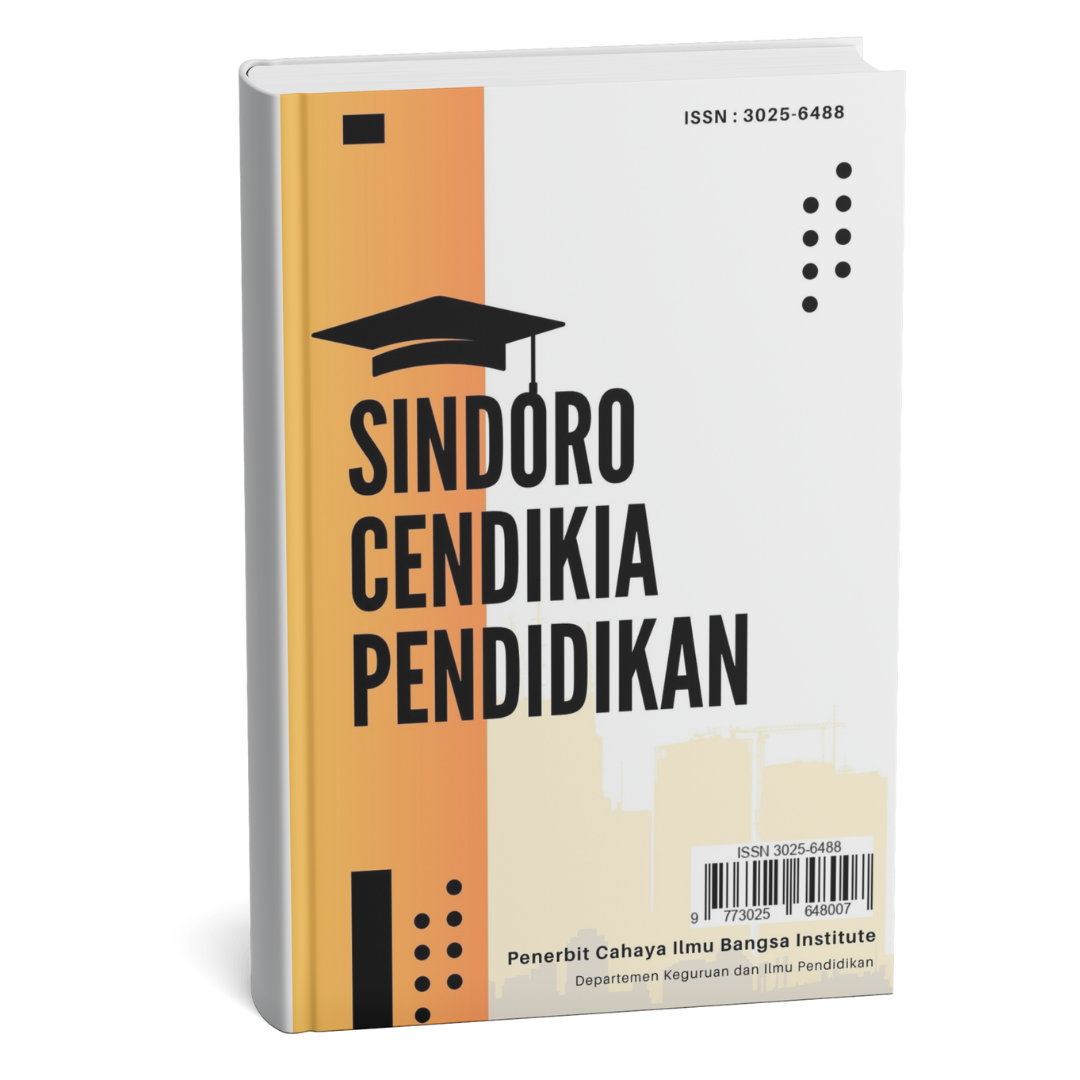GENDER AND MEANING : A SEMANTIC ANALYSIS ACROSS LANGUANGES
- Authors
-
-
Deswita Fitriani Samosir
Universitas HKBP Nommensen Pematangsiantar, IndonesiaAuthor -
Bernieke Anggita Ristia Damanik
Universitas HKBP Nommensen Pematangsiantar, IndonesiaAuthor
-
- Keywords:
- Gender, Semantic Analysis, Language, Grammatical Gender, Cross-Cultural Communication, Meaning Construction
- Abstract
-
This study explores the semantic dimensions of gender across
multiple languages to uncover how gender influences meaning in
linguistic
structures and communication. By conducting a
comparative semantic analysis, this research examines how
grammatical gender, lexical choices, and pragmatic usage shape and
reflect societal gender roles in different linguistic contexts. The
study analyzes languages with diverse gender systems, including
grammatical gender languages (Spanish, German, Arabic), natural
gender languages (English), and gender-neutral languages (Finnish,
Turkish). The findings reveal that gendered semantics vary
significantly across languages but consistently impact meaning
construction, social identity, and cultural communication norms.
This paper contributes to a deeper understanding of language as a
social tool influenced by gender and highlights implications for
linguistics, gender studies, and intercultural communication. - Downloads
-
Download data is not yet available.
- References
-
Bartell, M. (2003). Internationalization of universities: A university culture-based framework.
Higher Education, 45(1), 44, 46, 48, 49.
Cameron, D. (2007). The Myth of Mars and Venus: Do Men and Women Really Speak Different
Languages? https://www.palgrave.com/gp/book/9780230000370
Cameron, K.S. (1984). Organizational adaptation and higher education. Journal of Higher
Education 55(2), 123.
Eckert, P., & McConnell-Ginet, S. (2013). Language and Gender. Cambridge University Press.
https://doi.org/10.1017/CBO9781139155874
Ellingboe, B.J. (1998). Divisional strategies to internationalize a campus portrait: Results,
resistance, and recommendations from a case study at a U.S. university, in Mestenhauser,
J.A. and Elllingboe, B.J (eds.), Reforming the Higher Education Curriculum:
Internationalizing the Campus. Phoenix, AZ: American Council on Education and Oryx
Press, 199. http://www.mediacom.keio.ac.jp/publication/pdf2002/review24/2.pdf
https://books.google.com/books/about/Language_and_Woman_s_Place.html?id=QF9qAAAAM
AAJ
https://books.google.com/books/about/Language_and_Woman_s_Place.html?id=QF9qA
AAAMAAJ
Lakoff, R. (1975). Language and Woman's Place. https://www.jstor.org/stable/274090
Romaine,
S.
(1999).
Communicating
Gender.
Routledge.
https://www.routledge.com/Communicating-Gender/Romaine/p/book/9780415230176
Tannen,
D.
(1994).
Gender
https://doi.org/10.1093/oxfordhb/9780199247481.013.0003
a
- Downloads
- Published
- 2025-07-11
- Section
- Articles
- License
-
This work is licensed under a Creative Commons Attribution-ShareAlike 4.0 International License.
How to Cite
Most read articles by the same author(s)
- Cindy Simorangkir, Bernieke Anggita Ristia Damanik, A SEMANTIC ANALYSIS OF METHAPHORS IN TAYLOR SWIFT’S SONG LYRICS , Sindoro: Cendikia Pendidikan: Vol. 16 No. 11 (2025): Sindoro: Cendikia Pendidikan
- Thesa Laora Miranda Siahaan, Bernieke Anggita Ristia Damanik, DENOTATIVE MEANING IN LEXICAL SEMANTICS : A LINGUISTICS ANALYSIS OF THE LYRICS IN “CANCER” BY MY CHEMICAL ROMANCE , Sindoro: Cendikia Pendidikan: Vol. 16 No. 11 (2025): Sindoro: Cendikia Pendidikan
Similar Articles
- Naomi Simanjuntak, Bernieke Anggita Ristia Damanik, THE SEMANTICS REVIEW ON THE ANALYSIS OF IDIOMS IN ZOOTOPIA FILM , Sindoro: Cendikia Pendidikan: Vol. 16 No. 8 (2025): Sindoro: Cendikia Pendidikan
- Cindy Simorangkir, Bernieke Anggita Ristia Damanik, A SEMANTIC ANALYSIS OF METHAPHORS IN TAYLOR SWIFT’S SONG LYRICS , Sindoro: Cendikia Pendidikan: Vol. 16 No. 11 (2025): Sindoro: Cendikia Pendidikan
- Dimas Farhan Wiguna, STUDI MORFOLOGIS TERHADAP BENTUK MAZJ DALAM BAHASA ARAB KLASIK , Sindoro: Cendikia Pendidikan: Vol. 15 No. 12 (2025): Sindoro Cendikia Pendidikan
- Thesa Laora Miranda Siahaan, Bernieke Anggita Ristia Damanik, DENOTATIVE MEANING IN LEXICAL SEMANTICS : A LINGUISTICS ANALYSIS OF THE LYRICS IN “CANCER” BY MY CHEMICAL ROMANCE , Sindoro: Cendikia Pendidikan: Vol. 16 No. 11 (2025): Sindoro: Cendikia Pendidikan
- Tiondina Samosir, Bernieke Anggita Ristia Damanik, AN ANALYSIS OF DENOTATIVE AND CONNOTATIVE MEANINGS IN THE LYRICS OF 'FIX YOU' BY COLDPLAY , Sindoro: Cendikia Pendidikan: Vol. 16 No. 8 (2025): Sindoro: Cendikia Pendidikan
- Ahni Nafisa, Andika Gutama, Cicilia Ika Rahayu Nita, ANALISIS NILAI FILOSOFIS LAGU TRADISIONAL JAWA “GUNDUL GUNDUL PACUL” PADA PEMBELAJARAN SBDP DALAM MEMBANGUN KARAKTER KEPEMIMPINAN PADA SISWA SD , Sindoro: Cendikia Pendidikan: Vol. 17 No. 10 (2025): Sindoro Cendikia Pendidikan
- Ahmad Zulfadhli Fadhlan, Eko Ribawati, MAKNA DAN NILAI NILAI DARI TRADISI NIKI PALEG SUKU DANI PAPUA SEBAGAI KEARIFAN LOKAL PAPUA , Sindoro: Cendikia Pendidikan: Vol. 16 No. 4 (2025): Sindoro Cendikia Pendidikan
- Achmad Farchan, Septi Gumiandari, A LITERATURE REVIEW ON THE INFLUENCE OF MOTHER TONGUE ON STUDENTS’ SPEAKING SKILLS IN ENGLISH LANGUAGE LEARNING IN INDONESIA , Sindoro: Cendikia Pendidikan: Vol. 16 No. 5 (2025): Sindoro Cendikia Pendidikan
- Stefania Ayu Dewanti, MAKNA LAGU ARA DALAM RITUAL PENTI PADA GUYUP TUTUR ETNIK MANGGARAI DI FLORES , Sindoro: Cendikia Pendidikan: Vol. 16 No. 3 (2025): Sindoro Cendikia Pendidikan
- Indah Lailiyah, Nourma Oktaviarini, PENGEMBANGAN MEDIA BUKU CERITA DIGITAL BERBASIS CANVA PELAJARAN MATEMATIKA KELAS IV SD NEGERI 1 REJOTANGAN , Sindoro: Cendikia Pendidikan: Vol. 17 No. 2 (2025): Sindoro: Cendikia Pendidikan
You may also start an advanced similarity search for this article.






